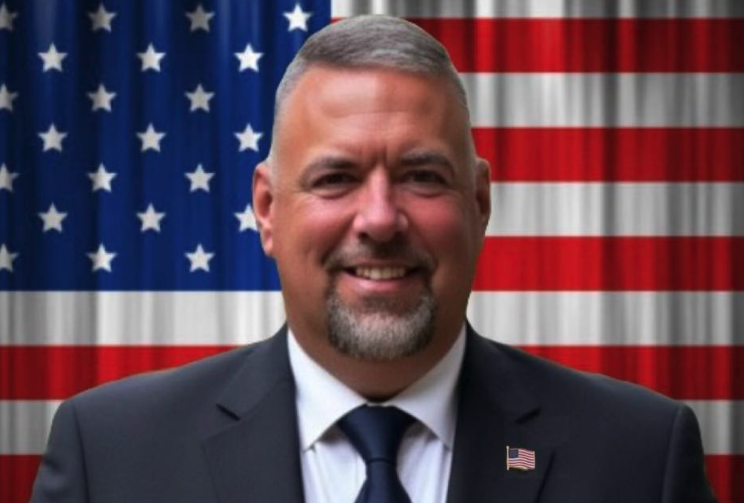Uncovering the Past
Published 8:31 pm Sunday, November 5, 2017
Lake Charles native Nancy Thomson de Grummond has been digging in Italian soil for decades
de Grummond with artifacts found in the Sanctuary of the Etruscan Artisans at Cetamura del Chianti
Trending
Most people visit the Chianti region of Italy for the wine. Lake Charles native Nancy Thomson de Grummond does it for the dirt.
“It’s addictive,” said de Grummond, a longtime classics professor at Florida State University and the university’s director of archeological excavations at Cetamura del Chianti, Tuscany. “I can’t get enough of it.”
She was recently recognized by the Tuscan American Association for contributing to the ties of friendship between Tuscany and the U.S. Since she became director in 1983, she has taken hundreds of American students to Cetamura del Chianti to excavate, publish research and recover ancient relics.
This past summer, she hosted an exhibit titled “Wells of Wonder: New Discoveries at Cetamura del Chianti” at the National Archeological Museum in Florence showcasing 300 artifacts, including bronze vessels, bones and pottery.
Because of the exhibit, the mayor of Gaiole in Chianti has invited de Grummond to open a museum in the region.
“That’s pretty big for us,” she said.
De Grummond, daughter of Alfred and Louise Thomson, said she has been fascinated with ancient cultures ever since her days at Lake Charles High School, where she took Spanish from Lucille Leaton and Latin from Iris Murphy.
She went on to major in Latin from LSU, honed her focus to archeology on an undergraduate trip to Europe and earned her doctorate from UNC-Chapel Hill.
De Grummond began teaching at Florida State after following her husband there. She has received numerous accolades from the university for her work, as well as a national teaching award from the Archeological Institute of America.
Grummond descends into an Etruscan well at Cetamura.
Her studies in Tuscany began in the early 1980s, when she was hired to lead the field school after the previous director stepped down.
“I was going to do it for three years; that was in 1983,” de Grummond said with a smile.
For five weeks every summer, de Grummond brings a group of students armed with trowels, buckets and sifters to excavate the site and catalog their findings.
Over the years, she said, she has grown fond of the flat hilltop where they work. She said that even after decades of digging, only half the site has been explored.
The remains of three eras lie beneath its surface: the Etruscan era, a civilization that thrived in Italy as early as the 10th century BC; the Roman Empire; and the Middle Ages.
She said the Etruscan people, however, have always been her favorite.
“That’s a society I feel like I’m learning something about,” she said.
As the first great civilization of Italy, she said, they have a rich history but few remaining texts.
“People get really curious about the Etruscans,” de Grummond said. “We just love to know more about them.”
The site was an ideal place for Etruscans to settle, she said, because it was flat enough for shops and homes but too high for growing grapes.
Based on the artifacts, archeologists have determined that a community of artisans worked and worshipped there.
“It’s kind of at a crossroads where major roads from north, south, east and west would come together,” she said.>
Nancy de Grummond is congratulated by the US Consul General to Florence, Benjamin Wohlauer (left) and the Mayor of Gaiole in Chianti, Michele Pescini. Gaiole is where we will open the new museum
Her group has uncovered bronze buckets, a kiln for making brick and tile, weaving instruments, and materials for making iron.
“It’s thrilling,” she said. “Even little insignificant objects … they just fire up your imagination and you feel so closely in touch with these people who lived so long ago.”
De Grummond said she often visualizes the artisans milling about.
“I would love to know what they looked like,” she said.
What she does know is they were often literate and comfortable mixing with upper classes — people “of a very particular class.”
“They tended to be flexible in society,” she said. “They could deal with people that were much wealthier or better educated. They were accepted.”
And they were also a religious people, de Grummond has found. She said the Etruscans worshipped in a sanctuary near the artisans’ quarter. Her team uncovered evidence suggesting that artisans would offer items from their labor at the sanctuary, such as iron nails.
One discovery in particular has piqued the interest of many in the archeological community: waterlogged grape seeds at the Etruscan level. She said the seeds reveal details about the wines made in Chianti over 2,000 years ago.
“Grapes are usually just dried and carbonized, but with ours we are getting all sorts of fascinating information,” she said.
Because the waterlogged seeds have extra flesh, analysts have been able to determine that their DNA matches that of grapes found in vineyards hundreds of years later.
“That means that they must have had a very developed culture of grapes, vineyards and wines,” she said. “And that’s pretty exciting.”
The property changed hands around 31 BC, when a Roman soldier was given the land on retirement.
After discovering numerous chicken bones at that level, her team concluded the soldier ran a poultry farm.
She said she learned another interesting tidbit from the artifacts at the Roman level: “Evidently this veteran retired from the army that beat Anthony and Cleopatra.”
De Grummond said she can’t explain her connection to these ancient cultures, and to the Etruscans in particular. But she feels it.
“They just appeal to me,” she said. “Their paintings, their sculptures, the interesting things they did, their religion — I can’t really explain it, but I feel connected.”
And as much as she wishes she could see and touch the people who once lived out their lives on the Cetamura hilltop, the mystery surrounding them is what continues to draw her back to Chianti.
She said she doesn’t expect her “interim” job will end any time soon, and sees herself digging in the dirt and descending into wells for many years to come.
“I could retire, but I don’t really want to,” she said. “I’m having too much fun.”




